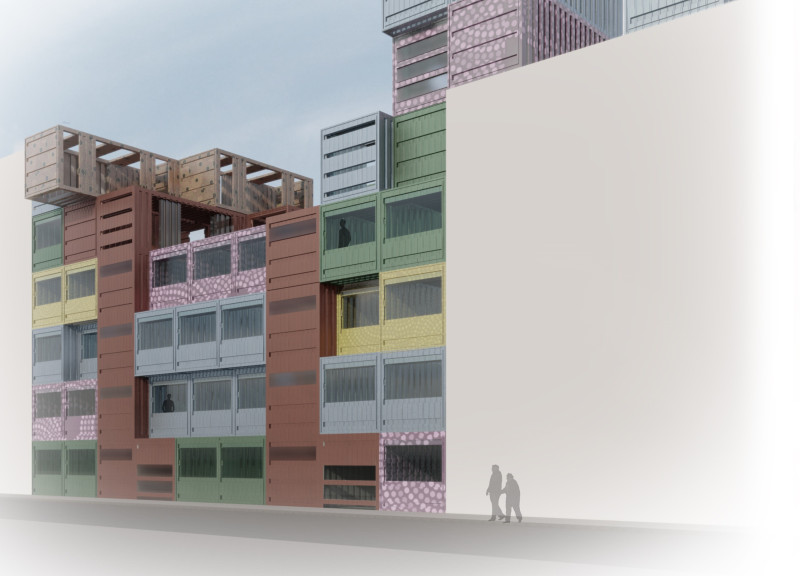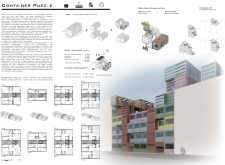5 key facts about this project
The project integrates various living unit configurations, ranging from compact studios to more spacious family units. This flexibility allows the Container Puzzle to accommodate different demographic needs, promoting a diverse community. The use of shipping containers as primary building elements reflects an economical and environmentally friendly approach to construction, emphasizing reuse and sustainability.
Innovative and Contextual Design Approach
The unique aspect of the Container Puzzle lies in its community-centric layout. The design features communal areas that encourage engagement among residents, making it different from conventional housing projects. Each unit is designed to be adaptable, allowing for future modifications or relocations based on the evolving needs of the residents. This flexibility is a defining characteristic of the project, ensuring longevity and relevance within the urban fabric.
The aesthetic presentation of the Container Puzzle is characterized by an orderly arrangement of colorful shipping containers, visually distinguishing the project from traditional housing developments. The integration of large windows and openings enhances natural light, contributing to a sense of openness and connection to the outside environment.
Sustainable Materials and Construction Practices
The selection of materials plays a vital role in the sustainability of the Container Puzzle project. Primary materials include repurposed steel from shipping containers, coupled with wood for internal features that create a warm atmosphere. Additional materials, such as glass and metal cladding, enhance the building's durability while maintaining aesthetic quality. The incorporation of solar panels contributes to the energy efficiency of the housing units, reducing reliance on external energy sources.
Architectural plans and sections further illustrate the functional layout and spatial organization, highlighting the innovative use of space that characterizes this project. The focus on ecological solutions and community engagement positions the Container Puzzle as a relevant example in contemporary housing design.
For a comprehensive understanding of the Container Puzzle, readers are encouraged to explore the architectural plans, architectural sections, and various architectural designs presented in this innovative housing project, as they provide detailed insights into the design's intent and functionality.























